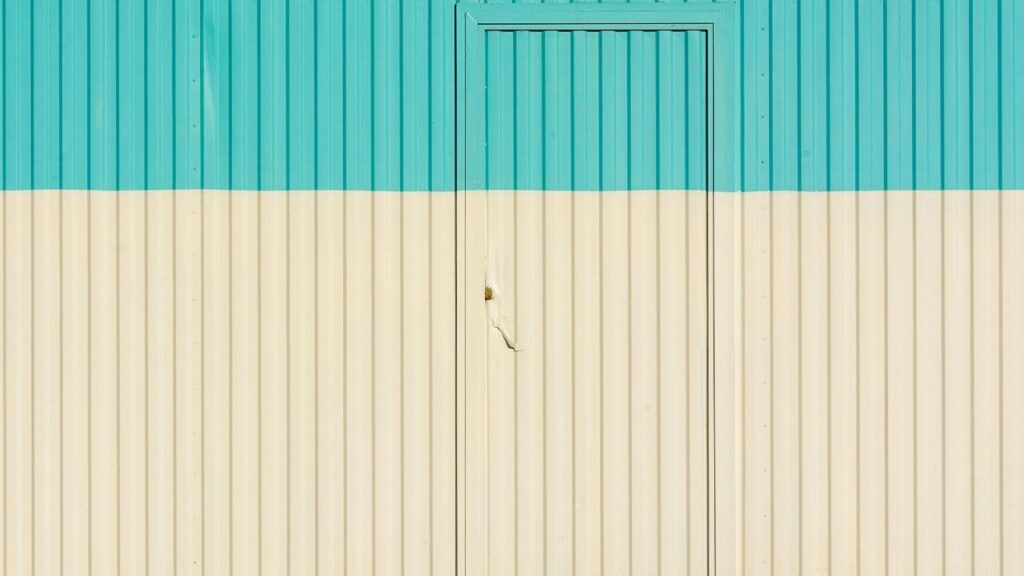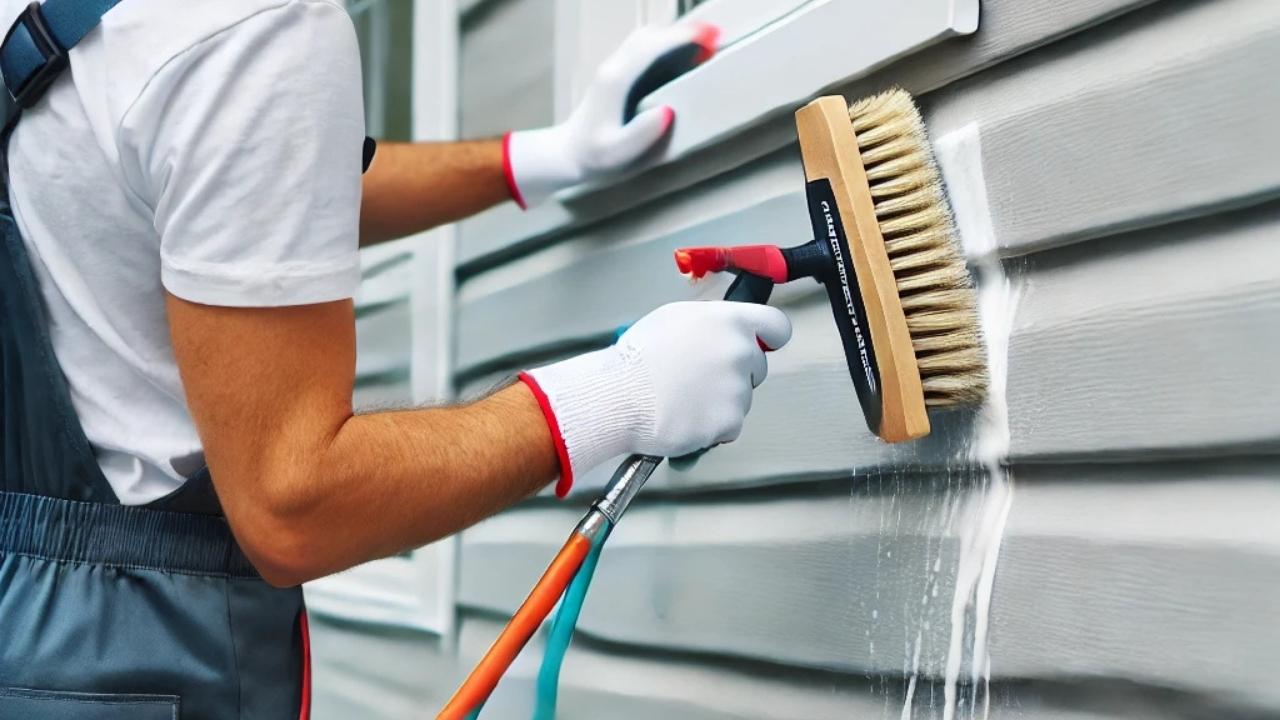Painting vinyl cladding is possible—and with the right approach, it can result in a durable, attractive finish. Many homeowners choose to paint their vinyl cladding as a cost-effective way to refresh the exterior appearance without replacing it entirely. When done correctly, a quality paint job not only enhances curb appeal but also adds a layer of protection against the elements, increasing the cladding’s lifespan. However, using the wrong type of paint or skipping essential preparation steps can lead to issues like peeling, cracking, or even warping. This guide will take you through the complete process, from selecting the right paint to applying it using proven techniques for long-lasting, professional-looking results.
Understanding Vinyl Cladding & Its Paintability
What Is Vinyl Cladding?
Vinyl siding, or vinyl cladding, is a material used to weatherproof and decorate the outside of homes that is very low-maintenance and durable. It’s favored because it’s more resistant to moisture, pests and fading. But over time, its color may fade, and leave a homeowner to ask, “Can you paint vinyl siding?” The good news is that there is a way to get paint to stick to vinyl, if done properly. Using the right paint for the vinyl cladding and preparing the surface correctly can make your home look fresh for many years to come. Before getting started, it’s important to know how vinyl responds to paint and whether painting is a good option for your home.
Vinyl Cladding: Does It Take Paint?
You can paint vinyl cladding using proper products and techniques although you need to follow certain conditions. Temperature changes affect vinyl by causing it to expand and contract therefore the selection of appropriate vinyl cladding paint becomes essential to stop cracking or peeling. Use quality acrylic latex paint as it provides flexibility and good adhesion. Color choice is another one to pay attention to — dark colors absorb more heat, which can lead to warping. Before you paint, ensure that your vinyl siding paint choices will work for the exterior of your home. Using the correct techniques you can leave an endurable weatherproof finish that increases curb appeal.
Benefits of Painting Vinyl Cladding
Benefits of painting vinyl cladding First, it’s affordable compared with replacing all the siding. This is a low-cost strategy that can put an instant fresh face on your home with minimal expense — think of it as an instant facelift. A superior paint coating applied to vinyl siding acts as a shield against damaging UV light and moisture alongside other forms of physical deterioration. The process of properly applying paint to vinyl siding offers three main advantages including siding life extension and energy efficiency improvements and property value growth so it represents a good exterior upgrade investment for homeowners.

Choosing the Right Paint for Vinyl Cladding
Choosing the ideal paint for your vinyl cladding is essential to achieve a long-lasting, professional finish. The number one choice is acrylic latex paint because it sticks well, it’s flexible and it will not crack as the vinyl expands and contracts. Steer clear of oil-based paints, which can dry the surface and make it brittle. And paint colors safe for vinyl are crucial — dark colors absorb heat and can cause warping, whereas light, neutral tones are a better bet. Opt for UV-resistant, weatherproof paint to avoid fading and peeling. High-quality exterior paint for vinyl siding protects the siding, is durable, and enhances curb appeal, ensuring your home’s new appearance lasts for years with little maintenance.
Step-by-Step Guide to Painting Vinyl Cladding Like a Pro
Taking the right steps painting vinyl cladding will ensure a smooth and long-lasting finish.
- Clean the Surface — Use a pressure washer or soapy water to remove dirt, mildew and chalky residue.
- Pick the Perfect Paint — When painting vinyl siding, stick to acrylic latex paint, using a vinyl-safe color so that it does not warp.
- Apply Primer if Needed — Old or weathered siding may not stick to simply adding paint.
- Paint Using a Sprayer or Roller — Apply PaintTreat with thin, even coats to avoid streaks and drips.
- Let It Dry Completely — For long lasting, give the paint a chance to dry before adding a second coat.
Longevity & Maintenance of Painted Vinyl Cladding
The service life of a well-maintained vinyl cladding exterior reaches between 5 to 10 years. To extend its longevity cleaning vinyl cladding with mild detergents using either a soft brush or low-pressure water system must be done on a regular basis to clear away dirt accumulation. The use of strong chemicals is harmful to the vinyl siding paint finish because they cause damage. . Check the siding annually for peeling, fading or cracks and repaint as needed to keep it looking good. Using UV-resistant, weatherproof paint for vinyl siding can help avoid fading. And for properly cared for painted vinyl cladding, it remains vibrant and protects your home for many years.

Alternative Solutions – Is Painting the Best Choice?
Painting vinyl cladding is an affordable way to give your home a new face, but it’s not the only one. A second option is vinyl restoration products that restore the color of faded siding without painting. The pressure washing also removes dirt and oxidation, returning some of the original color. If you have any questions, hire an expert to weigh the options and associated cost and longevity. Reliable vinyl siding painting stands as a top solution to enhance housing exterior appearance although complete assessment should confirm the right selection for your home’s specific needs.
Common Mistakes to Avoid When Painting Vinyl Cladding
If done incorrectly, painting vinyl siding can be disastrous.
- Using the Wrong Paint — Don’t use oil-based paints; Acryla latex paint is best for durability.
- Skipping Surface Preparation — Always clean before painting.
- Choosing Dark Colors — They tend to absorb heat so they may warp.
- Painting in Extreme Weather — Painting in too hot or too cold conditions, which results in uneven drying and peeling.
- Applying Thick Coats — For smooth, durable finish, use thin, even coats.
The avoidance of these mistakes will guarantee that you are left with a professional-quality paint job that will beautify and protect your home.
Conclusion
Painting vinyl cladding is a cost-effective method of refreshing the exterior of your home — but care and the right materials are a must. With high-quality acrylic latex paint, proper surface preparation, and even coats, you can accomplish a stunning, durable finish. Whether you paint or take other measures, properly maintaining your cladding will leave you with a beautiful home exterior for many years.
Pros and Cons Table
| Aspect | Pros | Cons |
| Cost | More affordable than replacing vinyl cladding | Requires investment in high-quality paint and tools |
| Customization | Allows for a wide range of color choices | Dark colors can cause warping due to heat absorption |
| Durability | High-quality acrylic latex paint extends lifespan | Poor paint choice can lead to peeling and fading |
| Curb Appeal | Enhances home appearance and property value | Needs proper maintenance to keep it looking fresh |
| Weather Protection | UV- resistant paint protects against fading | Extreme weather can affect paint longevity |
| Ease of Process | DIY-friendly with proper steps | Requires thorough cleaning and preparation |
| Warranty Issues | Can refresh old siding at a lower cost | May void manufacturer warranties on vinyl cladding |
FAQs
What kind of paint will stick to vinyl?
Acrylic paint offers excellent adhesion properties which allow it to stick to siding surfaces in a way that enables simpler application and raises longevity of the finish. No primer is needed when your paint color darkness exceeds the vinyl color darkness. The surface needs a surface primer if either the condition of the surface is neither pristine nor can you see any pits or wear.
Can you paint vinyl clad?
Yes, absolutely, Sherwin Williams sells numerous quantities of safe vinyl-based paint. We painted my father’s house nine years ago and the paint has lost its initial color intensity yet it remains solid without any decay. You should start by pressure washing the surface followed by suitable preparation steps.
Can I paint over plastic cladding?
Start your painting project with water-based plastic-specific paint to decorate your bathroom wall panels. The flatness of your panels determines whether you should use a roller while ridged surfaces require a paintbrush.
Is painting vinyl siding a good idea?
Painting vinyl siding remains technically feasible yet it stands as an unwise practice because it produces problems such as warping and paint peeling from vinyl expansion and contraction alongside potential warranty voidance; nevertheless, freshening up the color on new siding through proper paint selection and preparation techniques might be acceptable when replacement costs exceed budget.
Will paint peel off vinyl?
The vinyl material expands and contracts based on temperature changes but regular paint cannot adapt to this movement which leads to warping and peeling of the materials.
